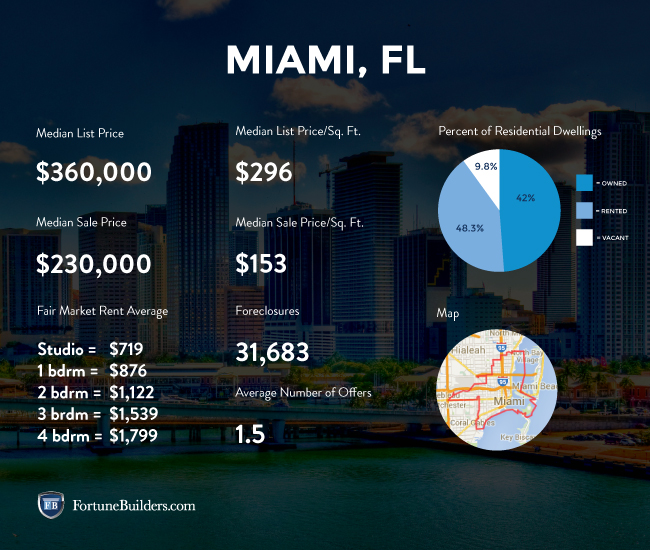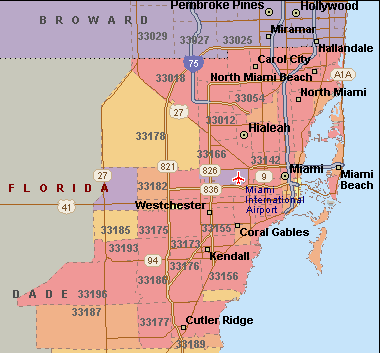Buyers, both foreign and domestic, continue to show immense interest in the Miami housing market.
Accordingly, it is their interest in Miami that continues to create opportunities for buyers and sellers of every level.
The Miami housing market has seen itself become one of the most prominent in the United States. In fact, the market has taken the form of an export economy, as foreign buyers continue to invest in the area. The interest of foreign investors has even out Los Angels. This remarkable transformation is due largely to the huge influx of foreign cash. Foreign investors purchase real estate, not in which to reside, but as an investment.
In Miami’s case, 90 percent of all the new downtown construction is due to demand from foreign investors. That said; most of these foreign buyers are interested in “high-end” real estate and are paying cash. The proof can be seen in Miami’s recent propensity towards luxury buildings.
Saddy Delgado, vice president of Sotheby’s International, says, “Chinese buyers are starting to see Miami as a hot spot and are realizing prices aren’t as high as New York and other major cities.” Cities like Boston andWashington D.C. just don’t have the same type of attraction foreign investors are looking for. While prosperous in their own way, Miami captivates foreign investors like no other city can.
According to the Miami Association of Realtors, “demand is incredibly high, and continues to rise in the Miami area.” The rate of new construction isn’t even able to convolute the increasing demand.
Condos and single-family homes have been the beneficiaries of 11 consecutive quarters of price
growth. Again, foreign and domestic buyers are huge purveyors of these types of properties. The surprising price growth is in spite of increasing inventories, which would typically reduce appreciation rates (supply and demand). However, despite the increases in price, demand remains strong. As a result, Miami’s housing market remains balanced.
The current median home price in the Miami housing market is $270,000. That said; the average property in the Miami housing market is priced nearly $50,000 more than the national average ($216,567). To get to where they are now, prices in the Miami region appreciated 3.8% in the previous year. However, perhaps even more impressively, houses in Miami appreciated 44.5% over the course of three years. Accordingly, prices are up from last year, but the rate they are appreciating is easing.
The following represents the amount of equity homeowners gained in Miami from the year in which the home was purchased:
- Homes purchased in the Miami housing market one year ago have appreciated by an average of $13,776, whereas the national average was $12,783 over the same period.
- Homes purchased in the Miami housing market three years ago have appreciated by an average of $92,110, whereas the national average was $55,406 over the same period.
- Homes purchased in the Miami housing market five years ago have appreciated by an average of $68,860, whereas the national average was $49,675 over the same period.
- Homes purchased in the Miami housing market seven years ago actually depreciated by an average of $45,773, whereas the national average increased $9,474 over the same period.
Miami’s encouraging outlook is due largely, in part, to the promising job sector.
Not unlike Baltimore, Miami’s job sector will help the housing market. While boasting an unemployment rate of 6.1%, 0.2% higher than the national average, local employment growth is strong. Over the past year, the unemployment rates have improved by more than 1 percent. Miami, in particular, is one of the strongest markets in all of Florida.
Among the state’s 22 metro areas, only Orlando showed bigger job growth, with an increase nearing 4 percent.
The Miami and Fort Lauderdale metro areas ranked No. 2 and No. 3, respectively.
Florida’s jobless rate hasn’t been this low since June 2008, when it was 6 percent. At that time, the state added 13,400 jobs in one month. The statewide job force grew almost 3 percent from the previous year, adding a total of 205,600 jobs. Subsequently, experts project the job sector to support the Miami housing market for the foreseeable future.
However, Miami does have one thing going against it: affordability. Appreciation rates have made Miami’s housing market incredibly expensive. Affordability poses special problems for the Millennial first-time homebuyers. It just is very hard for many to come up with the lofty down payments Miami homes require.
The private sector is responsible for the steady drop in unemployment. Construction, manufacturing and professional and business services were the main contributors to Miami’s job growth rate. That said; the current level of construction is 10.4% above the long-term average. Should construction rates continue at this rate, prices could moderate in the face of increasing inventory.
At the moment, inventory levels are just under 6 months for single-family homes, and over 8 months for condominiums. In a balanced market, there would be between six and nine months’ supply of inventory.
According to Trulia, “popular neighborhoods in Miami include Coral Way and Wynwood – Edgewater, with average listing prices of $644,901 and $573,393.” Look for these neighborhoods to bring up the rest of area.
Miami Housing Market Summary:
- Current Median Home Price: $270,000
- 1-Year Appreciation Rate: 3.8%
- Unemployment Rate: 6.1%
- 1-Year Job Growth Rate: 2.9%
- Population: 417,650
- Percent of Underwater Homes: 25.3%
- Median Income: $44,000
- Average Days on Market: 45
Miami Housing Market Q1 Update:
The Miami housing market continues to rely heavily on foreign buyers. According to the latest Miami Realtors press release, Internet users in Brazil — for two consecutive years — were the most active visitors searching for information on real estate in the Miami housing market at the beginning of this year. Colombia, Venezuela, Canada and India were the next most active countries interested in Miami.
The Miami real estate market — which is seen by many international investors as a safe haven for money reserves — has always benefited from international buyers who are looking to escape economic turmoil from their home country. For all intents and purposes, Miami real estate investing is a better alternative than anything they can do where they come from. In fact, Miami is a top six destination for the world’s wealthiest individuals.
Conversely, Miami real estate investing can also benefit those looking for affordable assets to flip for profits. Foreclosures run rampant in Miami, and should serve as a valuable source of deals for investors of every level. According to RealtyTrac, the Miami housing market has 30,287 homes in some state of foreclosure.
The majority of those homes can really benefit Miami real estate investing. In particular, the rate at which investors can buy. The average non-distressed home in Miami sells for about $229,100. However, distressed properties sell for about 30 percent less, or closer to $160,000. That is a savings of nearly $70,000 per property.
Miami foreclosures have increased in recent months, but one area has seen the biggest rise: bank-owned repossessions. Even though they only make up about a quarter of today’s foreclosures, they increased nearly 50 percent over the course of a month. Auction foreclosures, on the other hand, make up the majority of distressed properties at 40.9 percent. The remaining foreclosures on the Miami housing market are in default (33.5 percent).
While price appreciation in the Miami housing market has tempered, it is still one of the hottest markets in the country. Miami real estate investing will continue to see a large influx of foreign money, which will make for an active industry.
Miami Real Estate Investing Statistics:
Miami County Map:
*The information contained herein was pulled from third party sites. Although this information was found from sources believed to be reliable, FortuneBuilders Inc. makes no representations, warranties, or guarantees, either express or implied, as to whether the information presented is accurate, reliable, or current. Any reliance on this information is at your own risk. All information presented should be independently verified. FortuneBuilders Inc. assumes no liability for any damages whatsoever, including any direct, indirect, punitive, exemplary, incidental, special, or consequential damages arising out of or in any way connected with your use of the information presented.




No comments:
Post a Comment